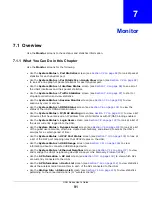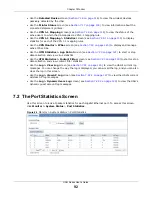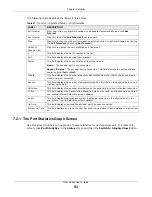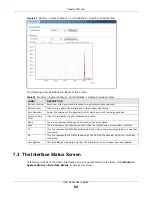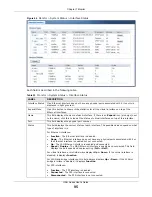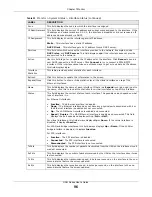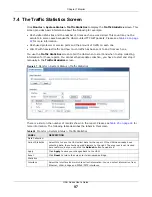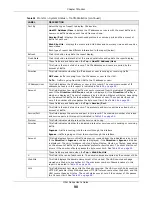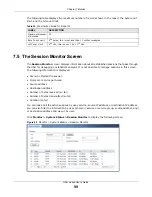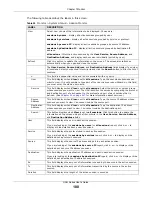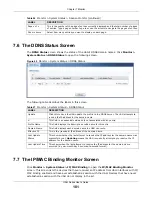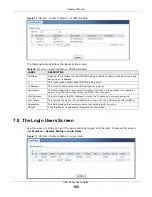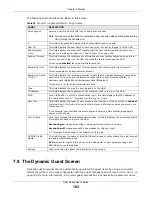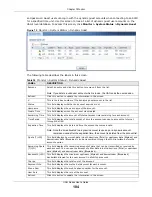
Chapter 7 Monitor
UAG Series User’s Guide
105
The following table describes the icons in this screen.
7.10 The UPnP Port Status Screen
Use this screen to look at the NAT port mapping rules that UPnP creates on the UAG. To access this
screen, click
Monitor > System Status >
UPnP Port Status
.
Figure 73
Monitor > System Status > UPnP Port Status
The following table describes the labels in this screen.
Table 31
Monitor > System Status > Dynamic Guest Icons
LABEL
DESCRIPTION
This guest account is un-used.
This guest account is in use and online.
This guest account has been used but is offline now.
This guest account expired.
This guest account has been deleted.
Table 32
Monitor > System Status > UPnP Port Status
LABEL
DESCRIPTION
Remove
Select an entry and click this button to remove it from the list.
#
This is the index number of the UPnP-created NAT mapping rule entry.
Remote Host
This field displays the source IP address (on the WAN) of inbound IP packets. Since this is
often a wildcard, the field may be blank.
When the field is blank, the UAG forwards all traffic sent to the
External Port
on the
WAN interface to the
Internal Client
on the
Internal Port
.
When this field displays an external IP address, the NAT rule has the UAG forward
inbound packets to the
Internal Client
from that IP address only.
External Port
This field displays the port number that the UAG “listens” on (on the WAN port) for
connection requests destined for the NAT rule’s
Internal Port
and
Internal Client
. The
UAG forwards incoming packets (from the WAN) with this port number to the
Internal
Client
on the
Internal Port
(on the LAN). If the field displays “0”, the UAG ignores the
Internal Port
value and forwards requests on all external port numbers (that are
otherwise unmapped) to the
Internal Client
.

